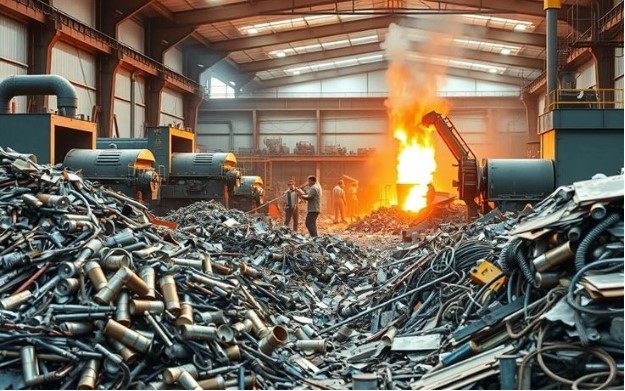The problem of waste continues to grow every year as industries, businesses, and households generate more than ever before. Among the many types of waste, metals stand out because of their durability and high environmental cost when discarded. Recycling metals offers a simple yet powerful way to cut back on the waste piling up in landfills. It also supports a sustainable economy where resources are used wisely and given new life.
Environmental Gains Of Metal Recycling
Metal recycling refers to the process of collecting, sorting, and reusing metals instead of letting them end up as waste. This practice reduces the pressure on landfills, which are already reaching capacity in many regions. Recycling metals also prevents soil and water contamination that comes from discarded materials. By giving metals a second life, we reduce the need to mine new resources, protecting natural landscapes and ecosystems.
Energy Savings Through Metal Recycling
One of the most overlooked benefits of metal recycling is energy conservation. Producing metals from raw ore requires immense amounts of energy. Recycling aluminum, for instance, uses only a fraction of that energy compared to refining it from bauxite. The same applies to steel, copper, and other common metals. Each ton of recycled material translates into thousands of kilowatt hours saved, which has a direct impact on reducing greenhouse gas emissions. Energy saved from recycling becomes an invisible but vital step in addressing climate change.
Economic Value In Metal Recycling
Metal recycling plays a strong role in driving economic growth. Industries save money by purchasing recycled metals rather than sourcing expensive raw materials. This cost efficiency benefits manufacturing sectors like construction, automotive, and electronics. Beyond industrial use, recycling also creates jobs. Collection, sorting, processing, and resale of recycled metals provide steady employment in both local communities and large-scale operations. By making metal recycling a priority, societies generate not just environmental but also financial rewards.
Waste Reduction Through Recycling Systems
Waste reduction relies on smart systems that ensure fewer materials are discarded after use. Metal recycling fits perfectly into this model. By designing collection networks and facilities that make recycling convenient, waste levels drop significantly. Many urban centers have already integrated recycling bins and drop-off points that encourage individuals to contribute. When communities actively recycle metals, the total volume of solid waste declines, easing the strain on municipal disposal systems. Waste reduction and recycling operate hand in hand, shaping a cleaner future.
Sustainability Goals Supported By Metal Recycling
Governments and organizations across the world have adopted ambitious sustainability goals. Metal recycling supports these goals by closing the loop in material use. Instead of the traditional model of produce, use, and throw away, recycling promotes a circular economy. In this cycle, metals never lose their value, as they can be melted and reshaped indefinitely without losing strength. This ongoing reuse supports climate targets, reduces reliance on virgin resources, and strengthens sustainable development strategies globally.
Conclusion
Metal recycling is more than a simple act of reusing old materials. It is a cornerstone of waste reduction and a driver of environmental protection, energy savings, and economic growth. Every time metals are recycled, fewer resources are wasted, and the planet breathes a little easier. The benefits are widespread, touching communities, industries, and ecosystems alike. In a world that must rethink its relationship with waste, metal recycling shines as one of the most effective solutions. By embracing it fully, societies move closer to a cleaner, greener, and more sustainable future.

